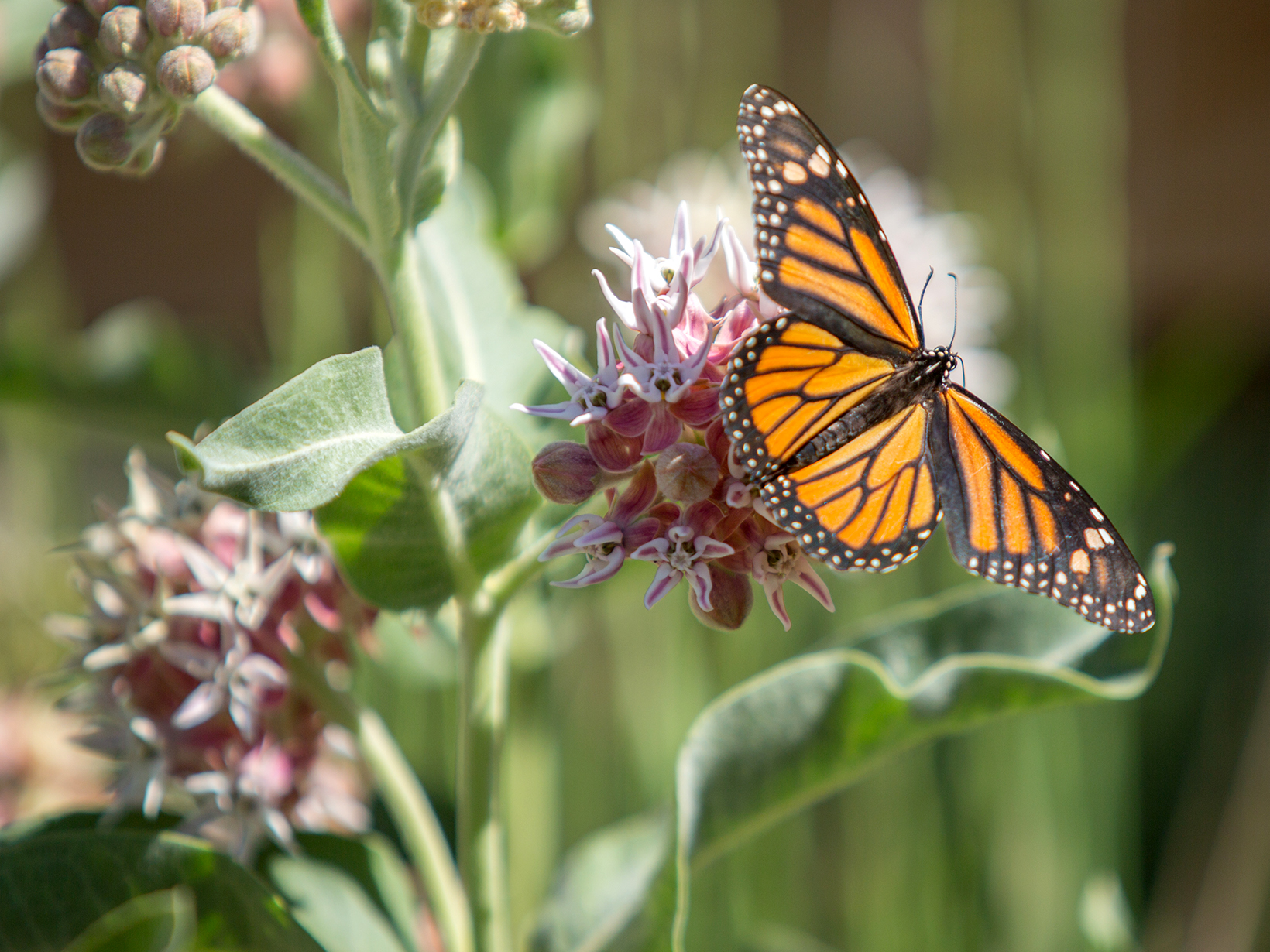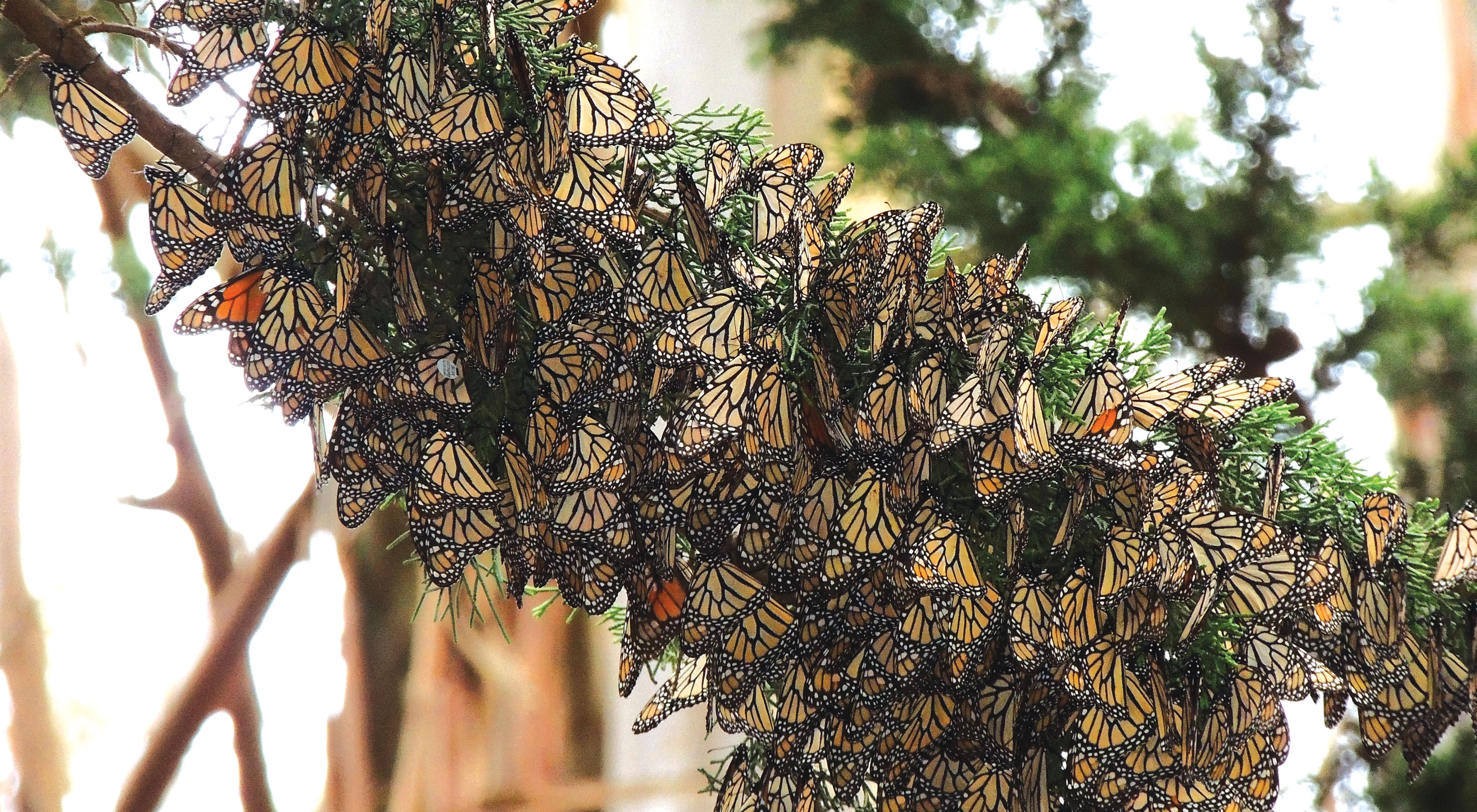Monarch Butterflies
Can you spot the tagged monarch? A Carson Valley monarch - number AA186 - was seen in this Santa Cruz colony.

Citizen scientists are discovering important insights about Nevada’s monarch butterflies with help from The Nature Conservancy’s restored River Fork Ranch.
The orange and black flash of a monarch butterfly’s wings is something everybody knows. But many people might not know that this familiar flash is becoming less and less common because monarch numbers have decreased greatly in recent years. One explanation scientists are pointing to is the elimination of milkweed, which is the only plant monarch larvae can feed on.
Milkweed is just what brought Pat Neyman, a local biologist, to The Nature Conservancy’s River Fork Ranch in the Carson Valley. “The stands of narrow-leaf milkweed at the ranch attracted my attention,” says Neyman, “because I was looking for a place to start a several-year project monitoring monarch larval populations.”
The Nature Conservancy has been working at River Fork Ranch for more than a decade to restore the natural habitat and bring back native vegetation, like the milkweed. Neyman’s work is part of a nationwide citizen-science endeavor called Monarch Larva Monitoring Project (MLMP).
Neyman launched her efforts in the spring of 2012 to see just what's happening with monarch populations in the Carson Valley.
“I was also interested in learning where the butterflies go to spend their winter,” explains Neyman. “They can’t withstand freezing temperatures, so they have to go somewhere warmer.” Though the delicate creatures weigh only about as much as a paper clip, they can travel thousands of miles. Monarchs east of the Rocky Mountains migrate to Mexico. Those west of the Rockies, based on a few data points, are probably going to California. Decades ago, several marked monarchs brought from other places and released in Reno were later found in California, but what about Nevada born and bred monarchs?
Neyman set to find out by tagging adult monarchs from the Carson Valley. She raised and released 64 marked monarchs, many of them from River Fork Ranch. The tags were provided by the Arizona-based Southwest Monarch Study, who under the inspired guidance of Gail and Bob Morris, have mobilized an army of volunteers to research Arizona monarch migration by tagging thousands of them. They keep track of any returns.
“Marked monarchs are mixed in with thousands or millions of unmarked ones in the winter roosts,” explains Neyman, “so the likelihood of seeing or finding one is very low. We were very excited when they called to tell us that one of our 64 marked monarchs was in California!”
That Carson Valley monarch was number AA186, a male released at River Fork Ranch on September 19, 2012. He was photographed in the Santa Cruz colony this winter by John Dayton, who is one of a group of volunteers spending their time monitoring the colonies up and down the California coast.
How did AA186 get from Nevada to California? Did he fly through the mountain passes or over the ridgelines? And how can he be so perfect-looking after such a long migration? We don’t yet know the answer to these questions. The incredible phenomenon of monarch migration awaits for development of technology which would enable researchers to follow individual butterflies.
The work at River Fork Ranch will continue this year. “We’re very excited that River Fork Ranch has become a certified Monarch Way Station,” says Duane Petite, Carson River Project Director for The Nature Conservancy. “We have seeded in more milkweed and hope to enlist more volunteers to help with the monitoring and other projects.”
Learn more about butterfly data Neyman collected at River Fork Ranch in the recent paper she wrote here.
